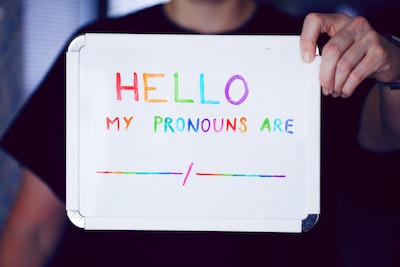Gender inequality is a complex issue that has been prevalent for centuries. Though significant strides have been made in recent years, there is still a long way to go. Women and girls continue to face discrimination across various sectors of society, including education, healthcare, agriculture, and policy-making. In this blog post, we will examine the concept of gender inequality and its origins, with a focus on women’s rights. We will explore how gender bias in education affects the future of young girls and women. Additionally, we will delve into the gender pay gap and its impact on women’s economic status. We’ll also look at how inadequate healthcare access affects women’s health and how child marriage is a form of gender-based violence with long-term effects on girls’ future. Lastly, we will discuss the need for more representation of women at the policy level to ensure that their voices are heard and their needs are addressed.
Unpacking the Concept of Gender Inequality
Gender inequality refers to the unequal treatment and opportunities based on gender. It takes various forms, such as disparities in education, employment, and healthcare. This global issue affects both developed and developing countries. Addressing gender inequality requires systemic changes and a shift in societal norms and attitudes. Promoting gender equality benefits not only women but also society as a whole. By dismantling gender stereotypes and prejudices, we can create a world where everyone has equal rights and opportunities. Through initiatives like the United Nations and organizations like UNICEF and the World Economic Forum, efforts are made to combat gender discrimination and empower women. It is crucial to recognize that gender inequality is not confined to a particular region or country; it is a widespread issue that demands urgent attention and action.
The Origins and Persistence of Gender Inequality
Gender inequality has deep historical roots and is ingrained in social structures. The persistence of this inequality can be attributed to patriarchal systems and traditional gender roles that reinforce disparities between genders. Discriminatory laws and practices further exacerbate these inequalities. Additionally, the perpetuation of gender inequality is sustained through socialization and cultural norms that dictate gender expectations and behavior. Challenging these deep-rooted structures and norms is crucial in efforts to address gender inequality and create a more equitable society, especially during a pandemic.
Gender Inequality in Education
Gender disparities in education limit opportunities for girls and women, perpetuating a cycle of inequality. Discrimination, lack of access, and early marriage are some of the barriers that girls face, hindering their educational development. However, closing the gender gap in education, particularly in secondary education, has the potential to bring about improved economic and social outcomes. Investing in girls’ education is crucial for sustainable development and requires policy interventions and community engagement. By addressing gender inequality in education, we can empower girls and women to overcome these challenges and unlock their full potential.
How Does Gender Bias in Education Affect the Future?
Gender bias in education has far-reaching consequences for the future. It limits girls’ career prospects, encouraging them to pursue traditionally female-dominated fields. This restricts their options and hinders their empowerment. Closing the gender gap in education is crucial for increased innovation and economic growth, requiring inclusive curriculum and supportive learning environments in secondary school.
Exploring the Gender Pay Gap
The gender pay gap refers to the disparity in earnings between men and women. On average, women earn less support than their male counterparts for the same work. Factors contributing to the pay gap include occupational segregation and discrimination. Addressing the gender pay gap requires policies promoting equal pay for equal work. Achieving pay equity benefits not only women but also families and the economy. By closing the gender pay gap, we can create a more inclusive workforce, reduce prejudice and discrimination, and promote equal rights for all individuals.
The Impact of the Pay Gap on Women’s Economic Status
The pay gap between genders has a significant impact on women’s economic status in Africa. It contributes to their economic insecurity and financial dependence, making them more vulnerable. Women earn lower wages than men, leading to reduced retirement savings and increased poverty rates. Furthermore, the pay gap hinders women’s ability to invest in education and career advancement, limiting their opportunities for growth and financial independence. Closing the pay gap is crucial for women’s economic empowerment and equality. Efforts should focus on eliminating discrimination and promoting transparency in order to achieve this goal.
The Gender Disparities in Agriculture
Gender disparities in agriculture perpetuate inequalities and hinder women’s access to resources and opportunities, leading to human rights violations. Although women play a significant role in agricultural production, they face unequal treatment and limited access to land, credit, and technology. This hinders their productivity and income, further exacerbating gender inequality. However, promoting gender equality in agriculture is crucial for improving food security and reducing poverty. To empower women in agriculture, policies must be implemented to address the gender-specific barriers they face. By addressing these disparities, we can create a more inclusive and equitable agricultural sector that respects human rights.
The Consequences of Gender Disparity in Agriculture
Gender inequality in agriculture perpetuates poverty and food insecurity, including child labour. Women farmers face challenges such as limited access to markets and extension services. Closing the gender gap in agriculture can lead to improved livelihoods and sustainable development. Women’s empowerment in agriculture enhances productivity and resilience. Promoting gender equality in agricultural policies and programs is essential for achieving food security. By addressing these disparities, we can ensure that women have equal opportunities to contribute to the agricultural workforce and benefit from higher incomes. This will not only reduce poverty but also create a more inclusive and sustainable agricultural sector.
Health Inequities: When Access to Healthcare is not Equal
Gender inequality has a significant impact on access to healthcare, leading to health inequities. Women and girls often face multiple barriers, including limited resources, cultural norms, and gender-based violence, that prevent them from receiving adequate healthcare services. These health inequities contribute to higher rates of maternal mortality and restrict reproductive rights. To address this issue, it is essential to improve the accessibility, quality, and affordability of healthcare for all genders. Ensuring equal access to healthcare not only benefits individuals but also has positive effects on families and societies as a whole.
How Poor Healthcare Access Affects Women’s Health
Limited access to healthcare has a negative impact on women’s health outcomes. Women often face challenges when it comes to accessing reproductive and maternal healthcare services. Additionally, gender-based violence and discrimination contribute to poor mental and physical health among women. It is crucial to improve healthcare access for women as it can lead to reduced maternal mortality rates and overall improved well-being. Implementing gender-responsive healthcare policies and programs is essential in addressing health inequities and ensuring that women have equal access to healthcare services.
Child Marriage as a Form of Gender-Based Violence
Child marriage, a form of gender-based violence against women, perpetuates gender inequalities by denying girls their basic human rights. It puts them at an increased risk of violence and abuse while limiting their access to education and opportunities. This harmful practice contributes to cycles of poverty and inequality, trapping girls in a vicious cycle. Child marriage is a violation of their rights and prevents them from realizing their full potential. By addressing this issue, we can work towards creating a more equitable and just society for all.
Effects of Child Marriage on Girls’ Future
Child marriage has severe consequences for girls’ future. It increases the risk of maternal mortality, denying them the chance to lead healthy lives. Furthermore, child marriage restricts their access to quality education, limiting their opportunities for growth and success. Early pregnancy and childbirth often result from child marriage, leading to health complications and hindering their personal development. Additionally, child marriage traps girls in a cycle of poverty and dependence, preventing them from realizing their full potential. By denying them the opportunity to fulfill their dreams and aspirations, child marriage perpetuates gender inequality and undermines the progress of society.
Is there Adequate Representation for Women at the Policy Level?
Women’s representation in policy-making, including women’s participation, is still inadequate. Gender disparities persist in political decision-making bodies, hindering progress towards gender equality. Women’s voices and perspectives are often marginalized in policy discussions, making it crucial to increase women’s representation for more inclusive policies.
The Need for More Women Leaders in Policy Making
Women leaders play a crucial role in policy making, bringing their unique insights and experiences to the table. They prioritize crucial issues such as healthcare and gender equality, ensuring that these topics receive the attention they deserve. Increased women’s representation in policy-making processes leads to better outcomes for all individuals, creating a more equitable society that values feminism. Women leaders also challenge gender norms and stereotypes in the policy arena, paving the way for more inclusive policies. By promoting diverse leadership, we can foster an environment that is more equitable and inclusive, benefiting everyone.
Conclusion
Gender inequality continues to persist in various aspects of our society, from education and the workplace to healthcare and policy-making. It is crucial to recognize and address these inequalities to create a more just and equitable society for all. By understanding the origins and consequences of gender inequality, we can work towards dismantling the systemic barriers that prevent women from fully participating and thriving. Whether it’s advocating for equal pay, promoting access to education and healthcare, or increasing women’s representation in leadership roles, each of us has a role to play in challenging and changing the status quo. Together, we can strive towards a future where gender equality is not just an ideal, but a reality.



